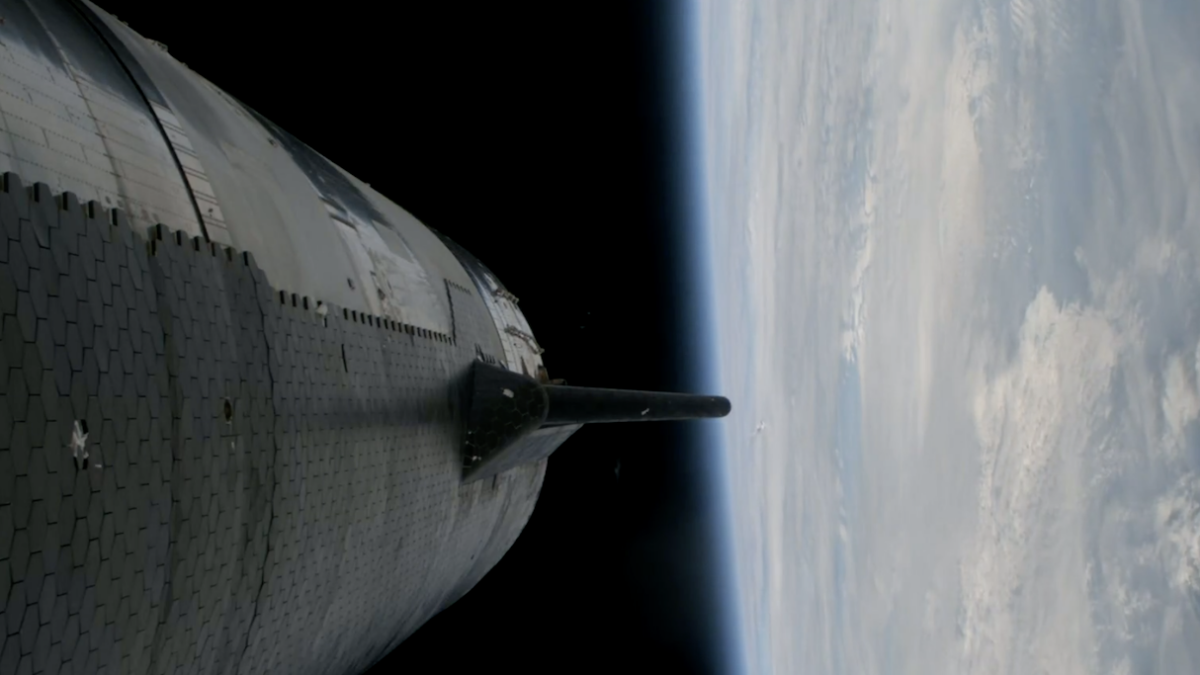Entertainment
SpaceX’s Starship just had fantastic firsts for spaceflight

SpaceX’s colossal Starship reached orbital speed for the first time as well as demonstrated a first step toward being able to refuel in space, before the company ultimately lost the ship on Thursday.
No injuries or property damages were immediately known.
Starship, a nearly 400-foot-tall, super-heavy-lift rocket and spacecraft, took off at about 8:25 a.m. CT from SpaceX‘s private launchpad in South Texas. For its third flight, the rocket survived longer and flew much farther than it did in November, showing significant hardware improvements over the past four months.
SpaceX’s nearly complete one-hour test is a boon for a company that has been pummeled with public scrutiny for its previous two test explosions. Its executives have insisted that each test leads to marked incremental progress. Building fast, breaking things, and learning from mistakes are all part of SpaceX’s development strategy — a departure from NASA‘s slow and methodical approach that Americans are accustomed to observing.
“I need a moment to pick my jaw up from the floor,” said Kate Tice, SpaceX’s quality systems engineering manager, during a live broadcast on X, the social platform acquired by SpaceX’s billionaire founder Elon Musk.

SpaceX’s Starship successfully reentered Earth’s atmosphere on March 14, 2024.
Credit: SpaceX / X.com screenshot
During the flight test on March 14, aka Pi Day to math whizzes, flight controllers oversaw the transfer of several tons of liquid oxygen between tanks inside Starship. The demonstration was a preliminary test for in-space fuel transfers. SpaceX representatives said they’ll have to review flight data to determine how successful they were in moving fuel during that operation.
NASA is depending on Musk’s rocket company to ferry astronauts to the lunar surface for the Artemis III and IV moon missions under a $4.2 billion contract. To do that, SpaceX first has to master refueling a Starship in low-Earth orbit, after it has already blasted off the planet. The tricky concept is known as “cryogenic propellant transfer” — something never done before in microgravity.

SpaceX’s Starship lifted off from the company’s private launchpad in South Texas on March 14, 2024.
Credit: SpaceX / X.com
Starship runs on 10 million pounds of liquid methane and oxygen, but the rocket consumes much of its fuel just to escape Earth’s gravity. To make the rest of the quarter-million-mile journey to the moon, Starship would need to top off its tank. The plan is for SpaceX to send up tanker versions of Starship into low-Earth orbit, establishing a space fueling depot. A passenger version of Starship would dock at a tanker, fill up, and then complete the rest of the moonbound flight.
Mashable Light Speed
NASA and commercial partners are interested in orbital fuel stations because they could allow spacecraft to travel longer and farther into the solar system. Future missions could use ice on the moon to make propellant by splitting water molecules into hydrogen and oxygen. If engineers can figure out how to store super-cold liquids in space, whether they are launched from Earth or produced somewhere else, it could make a long-term stay on the moon possible and even support distant missions to Mars.

SpaceX’s Starship sent home impressive views as it scaled the sky toward space on March 14, 2024.
Credit: SpaceX / X.com screenshot
Despite delays in Starship’s timeline, NASA leaders appeared thrilled with the rocket and spacecraft on Thursday.
“Congrats to @SpaceX on a successful test flight!” said NASA administrator Bill Nelson on X. “Starship has soared into the heavens. Together, we are making great strides through Artemis to return humanity to the Moon—then look onward to Mars.”

SpaceX’s Starship reached orbital velocity in space on March 14, 2024.
Credit: SpaceX / X.com screenshot
Along with the mini propellant transfer demo, Starship showed that it could fully ignite all of the booster engines and separate the booster from the upper stage while lit, though the booster broke up over the Gulf of Mexico before it could safely splashdown.
But all six raptor engines on the ship ignited and shut down as planned for the second engine cut off. Flight controllers also saw Starship successfully open the doors that will allow satellites to be released in space.
The Starship test did however end prematurely before it could achieve a safe splashdown in the water, said Dan Huot, a SpaceX commentator, during the broadcast. The team didn’t immediately know what happened to the ship before it could attempt the landing, but video feeds of the ship right before losing the transmission showed it was heating up considerably as it descended, blanketed with plasma due to its high speed.

SpaceX’s Starship embarked on an hour-long space journey around Earth on March 14, 2024.
Credit: SpaceX / X.com screenshot
The steep trajectory over the Indian Ocean was a change from plans for the first two flights, which set out to reach orbit and splashdown off the Hawaiian coast. SpaceX selected the alternative path to attempt new maneuvers in space, such as engine burns, without compromising public safety, according to the company.
Following the test, the Federal Aviation Administration will investigate the anomaly that resulted in the spacecraft’s destruction. It will then identify corrections SpaceX must make before it can fly Starship again.
Despite the loss, SpaceX’s team seemed thrilled with the rocket and spacecraft’s journey.
“After a test like today,” said Huot, holding a pie in honor of Pi Day, “I think we all deserve some pie.”
-

 Entertainment7 days ago
Entertainment7 days agoThis nova is on the verge of exploding. You could see it any day now.
-

 Business7 days ago
Business7 days agoIndia’s election overshadowed by the rise of online misinformation
-

 Business6 days ago
Business6 days agoThis camera trades pictures for AI poetry
-

 Business5 days ago
Business5 days agoTikTok Shop expands its secondhand luxury fashion offering to the UK
-

 Business6 days ago
Business6 days agoBoston Dynamics unveils a new robot, controversy over MKBHD, and layoffs at Tesla
-

 Business5 days ago
Business5 days agoMood.camera is an iOS app that feels like using a retro analog camera
-

 Business4 days ago
Business4 days agoUnitedHealth says Change hackers stole health data on ‘substantial proportion of people in America’
-

 Entertainment7 days ago
Entertainment7 days agoEarth will look wildly different in millions of years. Take a look.




























